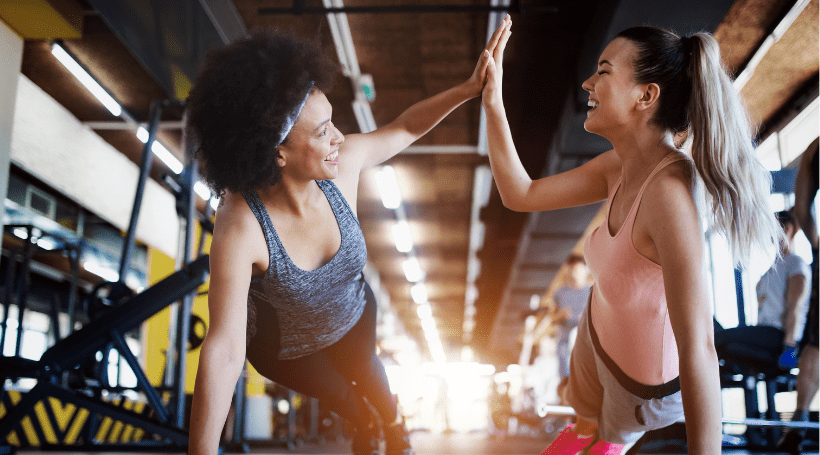Whether you’re looking to get stronger, want to shed a few pounds, or are training for a marathon, working out can be daunting. We caught up with Dr. Laura Ross of Ross Center For Orthopedics to find out what we need to know about our workouts.
What should my workouts look like?
These days, there are so many options when it comes to working out. Running clubs. Pilates. Yoga. Aerial classes. Hip hop classes. Trampoline. It goes on and on. So Dr. Ross broke down the basics of what your workouts should look like.

Laura Ross, DO
First, the American College of Sports Medicine (ACSM) recommends 150 minutes per week of moderate activity or 75 minutes per week of vigorous activity. So broken down, that’s 30 minutes five times a week. When it comes to what you’re actually doing in those sessions, Dr. Ross recommends doing moderate aerobic activity at least once a week and strength training twice a week.
“Strength training is going to help in so many different ways, including with your overall fitness,” she says. “It will help to utilize oxygen more efficiently when you’re doing your aerobic exercise and will help the joints and prevent injuries. Plus it does help you lose some weight.”
Remember recovery
You know the saying no pain, no gain? Well that’s only kind of true. We don’t want to push our bodies too far, says Dr. Ross. “You need to listen to your body,” she says. “And you have to let your muscles recover, so give yourself one or two days per week of not doing any exercise to allow for that recovery time.”
This is especially important if you’re feeling under the weather, she adds. You want to go slow if you’ve been feeling bad, and if you have any kind of infection, you definitely want to take a break from your workouts.
Fueling your fitness
Your workout doesn’t start when you step foot in the gym – it actually starts a few hours before, says Dr. Ross. It’s important to make sure you’re staying hydrated and getting enough nutrients before and after your workouts.
For water, make sure you drink about 20 oz. two or three hours before you start your workout, she says. Then drink eight ounces 20 to 30 minutes before and eight ounces every 20 minutes during your workout. Thirty minutes after your workout, make sure you get another eight ounces.
When it comes to food, a well-balanced diet is always important. Stay away from processed foods and try not to overeat, Dr. Ross says. Plus, include lots of fruits and vegetables and lean protein. And milk.
“If you’re having a protein shake, I usually recommend doing it with some type of milk instead of water,” she says. “Because it’s good for your bones, and you’re developing your bones into your early 20s. And after that, you have to maintain it.”
Slow and steady
Reminder: you’re not going to work out for a week and suddenly become an elite athlete. It takes time. And all you have to do right now, says Dr. Ross, is start.
“You just start slowly, doing something like getting outside and walking,” she says. “Walk the dog, get out at lunchtime for a 10-minute walk, read your emails while walking on the treadmill. Doing something is better than doing nothing, and then you can increase it a little bit, like 10%, each week.”








